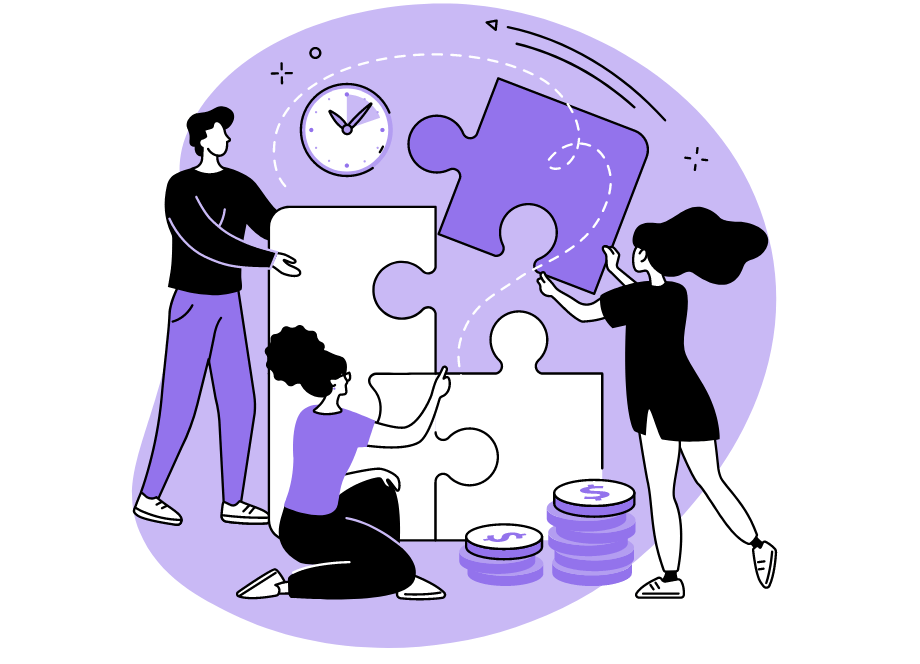
Agile methodology has taken the world of software development by storm.
An alternative to the traditional Waterfall approach, Agile is twice as likely to succeed and 33% less likely to fail, making it the go-to method for most developer teams.
However, to fully incorporate the Agile framework, your employees need to understand it. Hosting a presentation won’t cut it—your developers should live and breathe Agile.
A great way to incorporate the methodology, and foster teamwork between employees, is with some Agile team-building games.
Read on for a full list of activities your developers are bound to enjoy.
Table of Contents
1. Ball point game
The Ball point game is a popular Agile team-building game.
A relatively simple activity at first glance, the game is actually an excellent method for understanding Agile production processes and projects.
The objective is straightforward—team members must pass a ball around a table so that everyone touches the ball once.

However, points are only earned when the first person to touch the ball is also the last to touch it.
The game is split into 3-minute sprints. The first minute is spent discussing strategy and how many points the team expects to score.

Get unreal data to fix real issues in your app & web.
The second minute entails actually passing the ball around, and the final minute is for recording the points scored and reflecting on the team’s performance.
Then it’s time to move on to the next sprint!
With each new sprint, teams learn self-organization and slowly establish a working process, so in theory, the number of points they gain should increase with each round.
2. Battleships
Classic games can also be used for teaching Agile values. For instance, Battleships is a strategy game developed in the 60s that is nowadays useful for teaching iterative development.
You’re probably familiar with the game, but if it’s been a long time since you’ve played it last, here’s a quick rundown of how it works—with a helpful twist that lets developers hone their skills.
Developers are split into two teams (A and B), and each team is given a grid on which they position their battleships.
Two minutes are allowed for battleship placement, and teams can’t see each other’s grids.
Then, team A is given 5 minutes to launch an attack on team B by guessing where their vessels are on the grid, and team B informs them at the end what the hits and misses are.
Afterward, team B assaults team A—but this time with real-time feedback on the hits and misses.
Because of the constant feedback, team B has a much higher chance of making more hits. You can see this in the visual below.
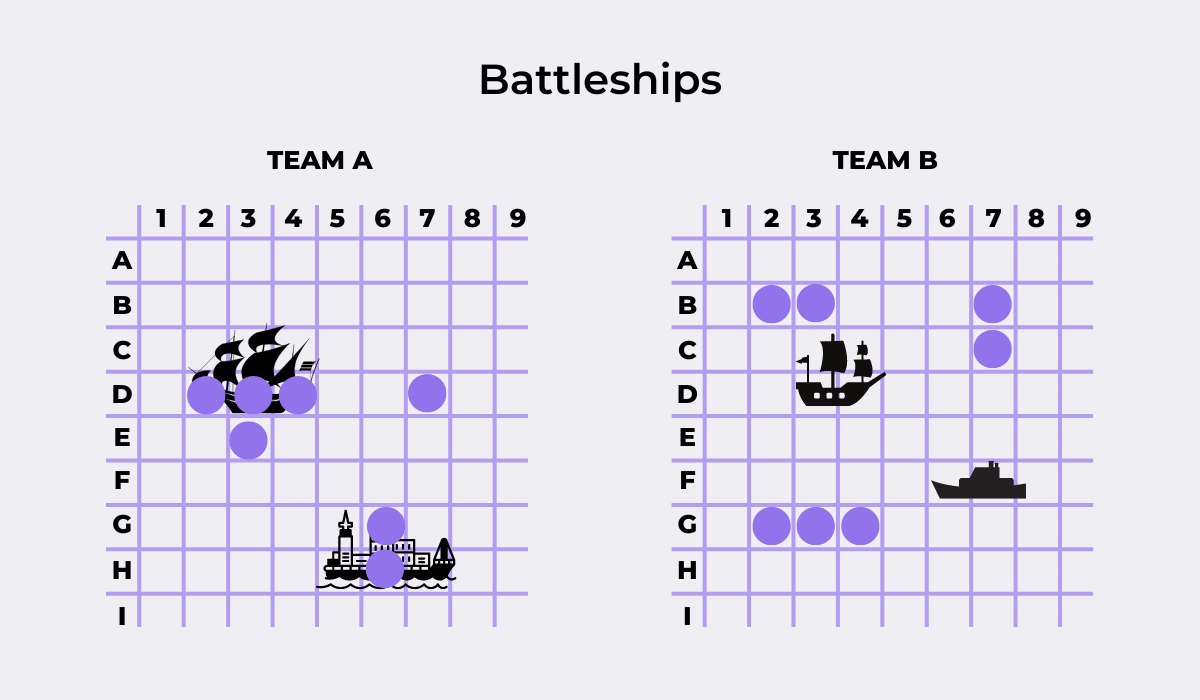
Since team B is following iterative rules, they have a much higher success rate. The game, therefore, teaches developers the value of feedback and iteration.
3. Emoji communication game
Agile development is impossible without open communication. You’ll want your developers to practice this skill, and one popular method for doing so is the Emoji communication game.
The game is quick and straightforward. One developer has to construct a message using only emojis.
Then the other team members all write down what they think the full sentence is, and when everyone has guessed, the original developer reveals the true meaning.

The activity is primarily designed to raise awareness of the fact that everyone communicates in different ways.
What you might interpret as blunt and rude, others might consider just being straightforward and efficient.
Furthermore, the game also teaches that when conveying important information, you should be as clear and concise as possible.
It won’t do to communicate project deadlines in a rushed, never-ending long sentence. Instead, try bullet points, and use a bold font to highlight the most important dates.
4. Bubble point game
One of Agile’s main credos is constantly reflecting on completed work and assessing workflows. The Bubble point game helps with this process.
A fun, virtual team-building activity that helps developers iterate their descriptions and contemplate their decision-making, your developers will learn a lot.
Split your team into groups, and provide them with a Miro board displaying an image—but obstructed by multiple different bubbles.
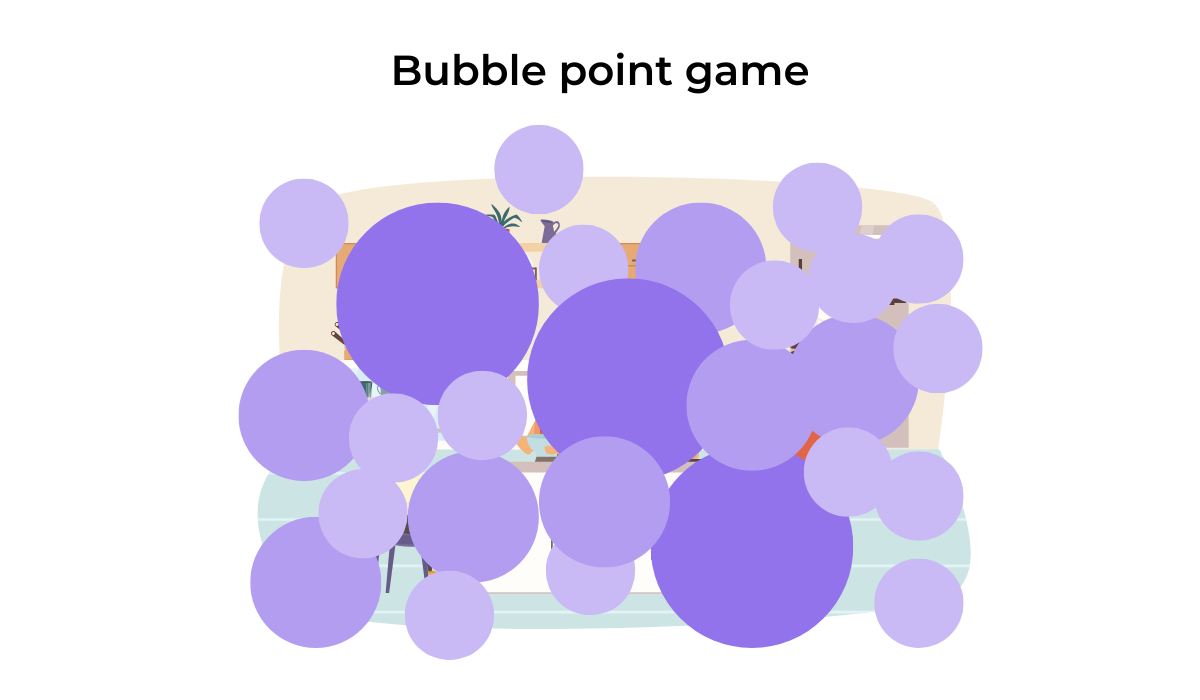
The aim is to strategically remove the bubbles to clearly view the image.
The game is split into five sprints, and only a certain amount of bubbles can be removed each sprint.
Once a sprint is over, developers should put their heads together, brainstorm what the image is, and also review the reasons behind their decisions.
Why did they remove those specific bubbles?
By the end of the game, your developers will see the entire visual and also have a deeper understanding of their decision-making process.
5. Paper airplane game
Making a paper airplane might sound simple—if you’re doing it by yourself. The Paper airplane game takes the popular pastime to the next level.
Split your team into groups, and give each team a stack of paper.
The goal is to make as many paper airplanes as possible, but with one caveat—each team member can only make one fold before passing the paper on to the next person.

Furthermore, teams only gain points if the paper airplane flies a predetermined distance.
The game is split into nine-minute sprints—three minutes for planning, three minutes for building and flying the paper planes, and three minutes for a retrospective.
This method helps developers get comfortable with working in time boxes and iterating on their ideas.
Both concepts are vital in Agile methodology, and the game is an excellent method to rehearse these practices.
6. Chocolate bar game
In the Chocolate bar game, the developers run the show. Your team bands together and indulges in designing the tastiest, most delicious chocolate bar.
In short, one person takes on the role of the product manager, whereas all the other team members become the customers.
The product manager designs a chocolate bar from scratch, paying attention to all aspects, including fillings, toppings, and the type of chocolate.
The chocolate bar is then presented to the customers, who all offer feedback and suggest modifications.
The product manager must consider their comments and try to adjust the chocolate bar so that it will ultimately satisfy all the customers.

Customers can also ask for special dietary requirements, such as gluten-free, dairy-free, and organic options.
The activity is a fantastic Scrum simulation, incorporating iterations, customer feedback, and continual learning. The product manager must adapt his product so that all parties are satisfied.
7. Coin game
The Coin game consists purely of flipping coins, and its purpose is to teach your developers the value of working in smaller, more frequent batches.
First of all, split your team into workers and managers—each worker must have one manager. There should also be one player who takes on the role of the customer.
Then, place twenty coins on the table, five of each type (pennies, nickels, dimes, and quarters), so that they’re all looking in the same direction, i.e., with either the heads or the tails facing up.
The first worker must flip all twenty coins and then pass the coins to the next worker.
Meanwhile, the manager assigned to them times how long the coin-flipping takes, while the customer times the entire process from beginning to end.

During the second iteration, the number of coins is reduced to 10 or 15.
That should automatically cut the time to delivery to the customer, even though the worker’s individual performance suffers.
In other words, the game teaches that smaller batches ensure the customer gets their product faster.
8. Marshmallow tower
The Marshmallow tower game will give your developers a run for their money—your developers will have to work together to create the world’s wackiest building.
First, split your team into groups of four members. Then hand them twenty sticks of uncooked spaghetti, one yard of string, one yard of tape, and one marshmallow.
The game’s objective is to create the tallest freestanding tower, with the marshmallow perched on top.
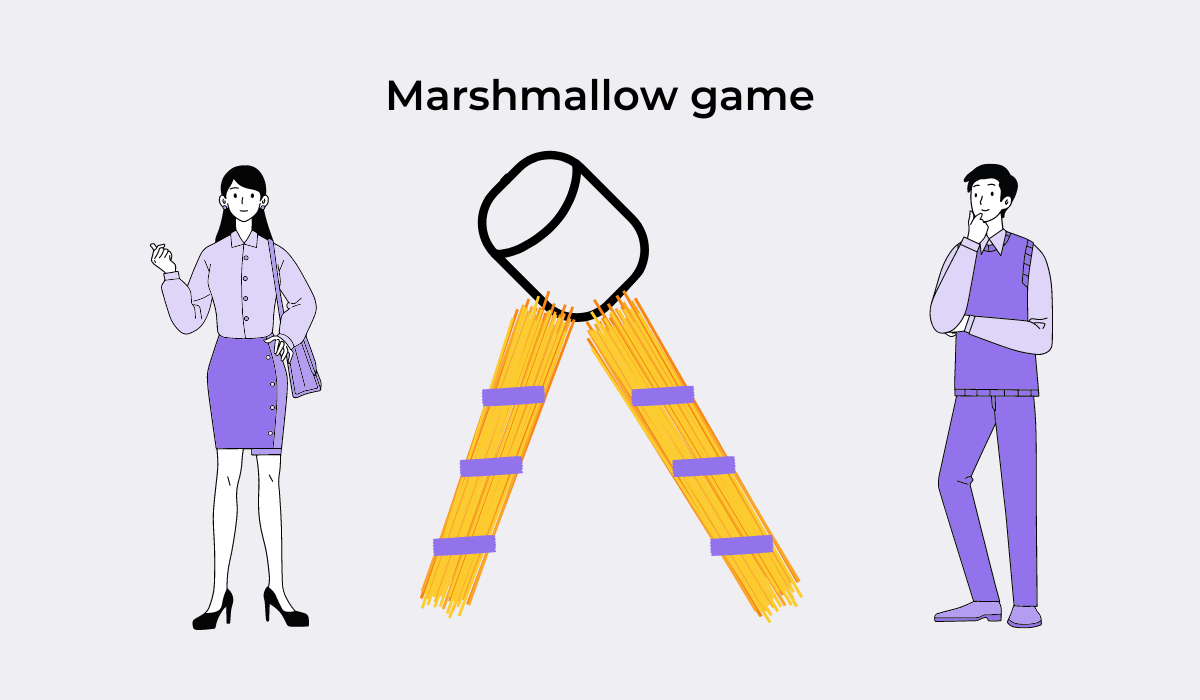
Although the goal is straightforward, the actual execution is pretty challenging. Team members must brainstorm and learn to collaborate quickly, as only twenty minutes are allowed per round.
Furthermore, structures that seem viable in your developers’ imagination won’t necessarily be executable—teams are likely to have their fair share of towers collapse.
The game is a fantastic method for improving teamwork and learning from iterations.
Each time a tower collapses, teams should assess their process, determine what went wrong, and refine their tactics.
9. Sandwich game
This game will likely become one of your developers’ favorites—after all, they’re guaranteed to receive a prize at the end.
Another collaboration activity, the Sandwich game, will teach your team members how to work together as a group.
The objective is straightforward—to make a sandwich.
Choose one team member to give sandwich-making instructions to the others, and instruct them to be as literal as possible.
For example, they aren’t allowed to say cut the bread without first saying pick up the knife.
Furthermore, whoever is giving the instructions must be exceedingly specific.
Cutting hexagrams into the loaf isn’t going to help anyone—it’s essential to mention that the slices should be square and cut from the top downwards.
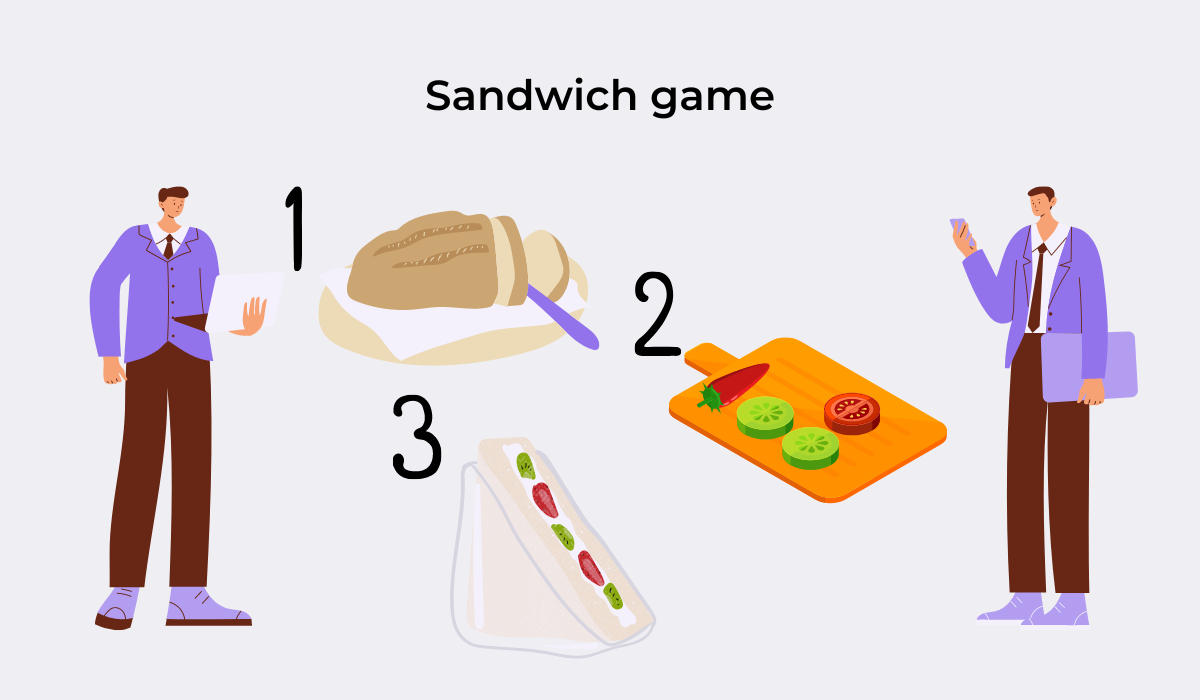
Following the leader’s instructions, the other team members should be able to construct the perfect sandwich.
With this game, your developers will boost their collaboration skills and learn to listen to their team members.
10. Murder mystery game
With a Scrum framework, assessing your prowess as a group can sometimes be difficult, and developing strategies to improve the team is even more challenging.
However, with a few murder mystery games, your developers will learn how to do this without even realizing it.
These activities encourage problem-solving, as team members put their heads together to try and get to the bottom of the game’s puzzles.
Your developers must look at the evidence, examine the past, and, ultimately, deduce the problem component (i.e., identify the murderer).
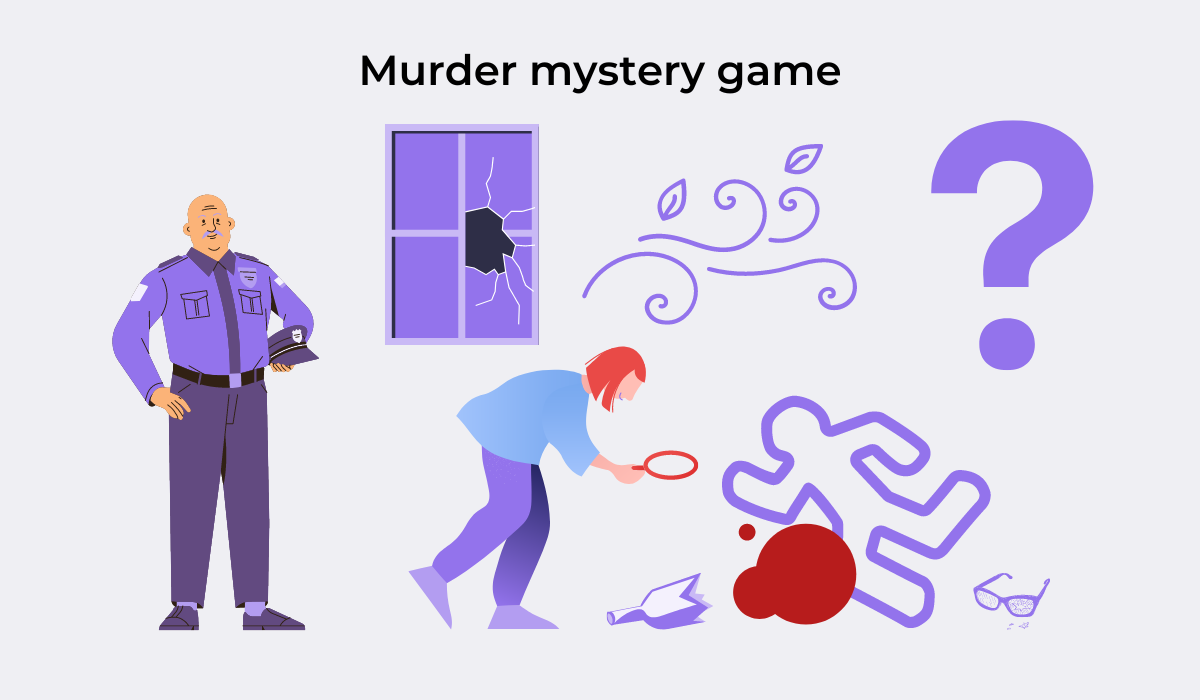
These are all skills required in the everyday world of Agile development, simply presented in a different format.
Your developers will be improving their communication and problem-solving capabilities while having fun.
If some of your developers are remote, there’s no need to worry. Plenty of virtual murder mysteries are available online that are just as enjoyable as the on-site variants.
11. Broken Skype
If your developers have played Broken telephone, they’ll learn Broken Skype quickly.
The latter is an adaptation of the former, except the players have to repeat hand signals instead of repeating words.
First, come up with some hand signals—a simple one and two or three that are more complicated.
Then, position your employees so that everyone stands in a row and looks at each other’s backs.

To start, tap on the back of the last person in the row. When they turn around, show them the simple hand sign once.
Everyone else in the line then repeats the process until the first person shows their version of the movement.
In the end, compare the gesture made by the first person in the row to the actual sign made at the beginning to see how well your team communicated the initial gesture.
Afterward, repeat the game with the more complicated hand signs for a higher difficulty level.
12. Ten things in common
Perhaps the only essential component of any team dynamic is that your team members get along well.
Designed as a fast bonding experience, Ten things in common is a game that will facilitate this.

Very handy for handling user feedback. CTOs, devs, testers – rejoice.
Although the gameplay is simple, its execution is pretty tricky. Your team members must find ten things they all have in common. This isn’t going to be easy, especially in a large team.
For example, you might think something like they both studied CS to be a no-brainer.
However, multiple boot camps and courses now teach coding basics, and you don’t need a Computer Science degree to be a developer.
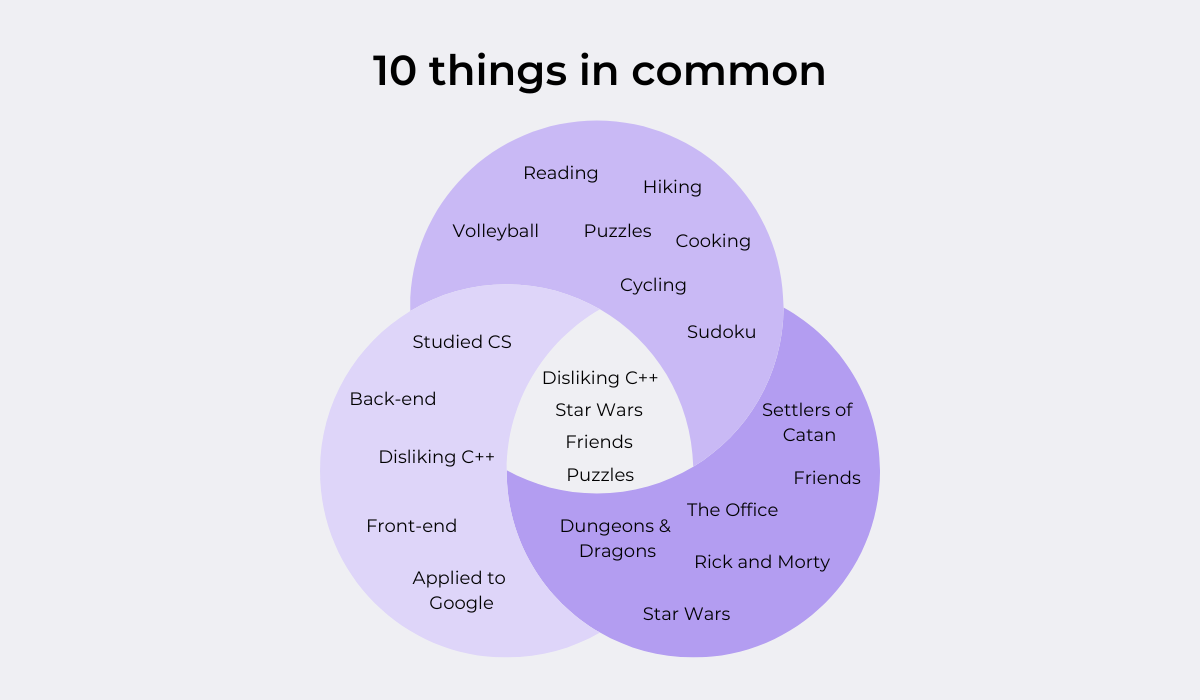
Give your team barely any guidelines and instead have them approach the challenge independently.
This is also an excellent opportunity to recognize which employees exhibit leadership qualities.
A low-stakes, high-pressure activity, the game is a fantastic way for your employees to get to know one another and to learn how to take control of the situation.
Conclusion
These 12 Agile team-building games help you kill two birds with one stone.
Not only will you build collaboration between your team members, but you’ll also introduce them to the basics of Agile methodology.
Games such as the Emoji communication game and Broken Skype are fantastic for practicing communication skills, whereas the Bubble point game and Battleships teach the value of iterative development.
There are countless games to choose from, but whichever one you choose is bound to be productive for your developers.
With each game, they’ll hone a different skill set and ultimately become a better, more collaborative team member.
